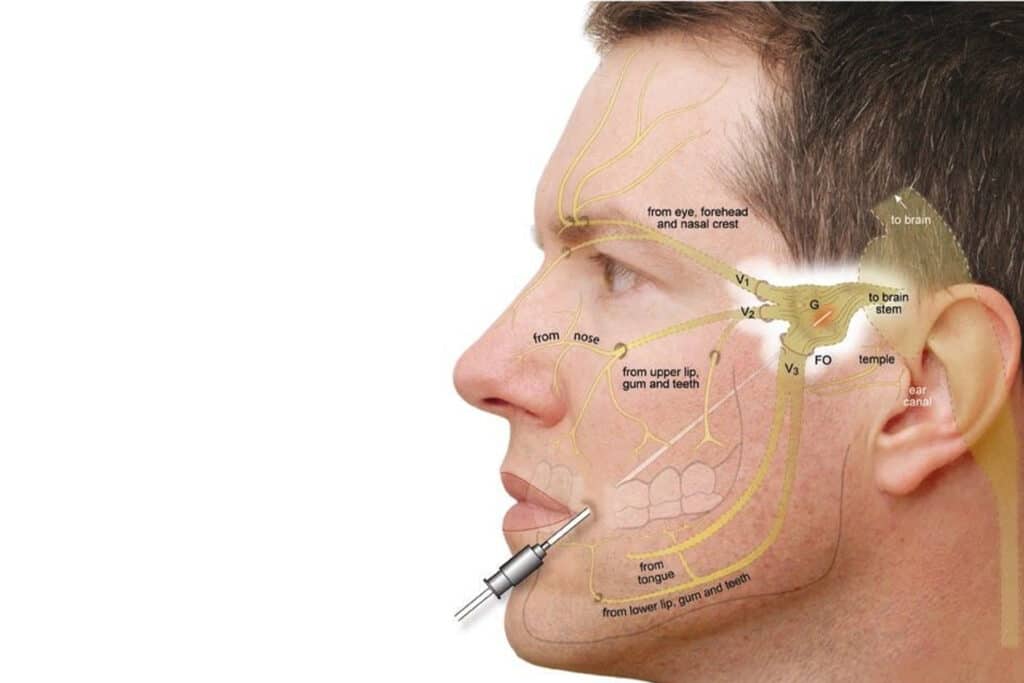Trigeminal RF
What is Trigeminal RF?
“Trigeminal RF” likely refers to a medical procedure called Trigeminal Radiofrequency Ablation or Trigeminal Nerve Radiofrequency Ablation. This
procedure is specifically targeted at addressing chronic facial pain, particularly pain associated with the trigeminal nerve.
The trigeminal nerve is the fifth cranial nerve and is responsible for sensation in the face and controlling the muscles used in chewing. Trigeminal neuralgia is a condition characterized by severe, stabbing facial pain along the trigeminal nerve branches.
Trigeminal Radiofrequency Ablation involves using radiofrequency waves to create heat and selectively damage the trigeminal nerve, interrupting pain signals and providing relief for individuals with trigeminal neuralgia.

Here's an overview of the procedure
• Patient Positioning: The patient is usually positioned on the procedure table, and the area of the face where the pain is experienced is cleaned and sterilized.
• Local Anesthesia: The skin and deeper tissues in the treatment area are numbed using a local anaesthetic to minimize discomfort during the procedure.
• Needle Placement: A thin, insulated needle is guided through the skin to the targeted area near the trigeminal nerve using fluoroscopy (real-time X-ray) or another imaging technique.
• Sensory and Motor Testing: The physician may perform sensory and motor testing to ensure proper needle placement and to avoid damage to surrounding nerves.
• Radiofrequency Ablation: Once the needle is correctly positioned, radiofrequency waves are generated and directed to the trigeminal nerve. The heat produced by the radiofrequency waves creates a lesion on the nerve, disrupting the transmission of pain signals.
Some quick information
Our goal is to help the patient regain their quality of life
We relieve your pain, helping you be yourself again!

